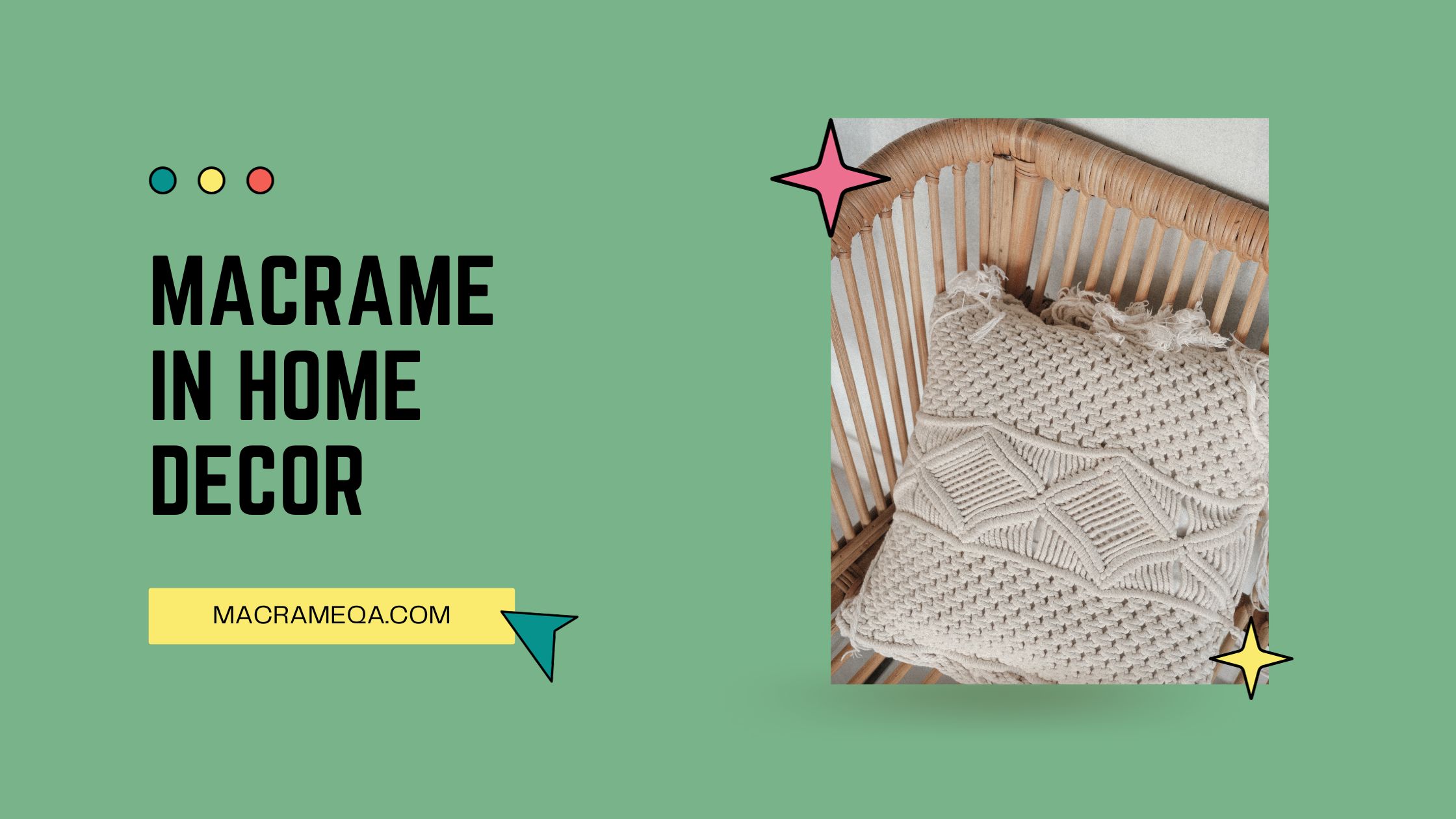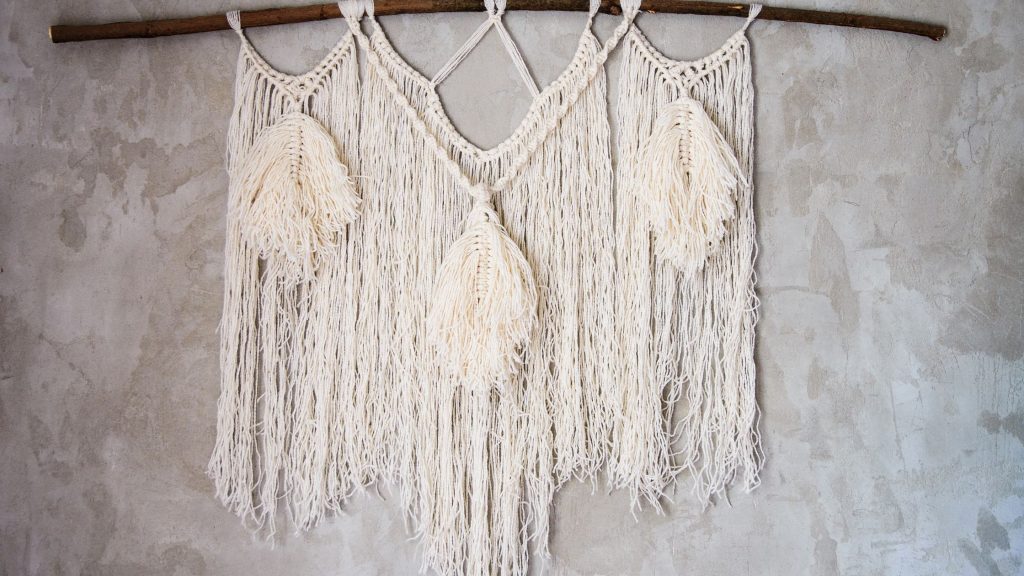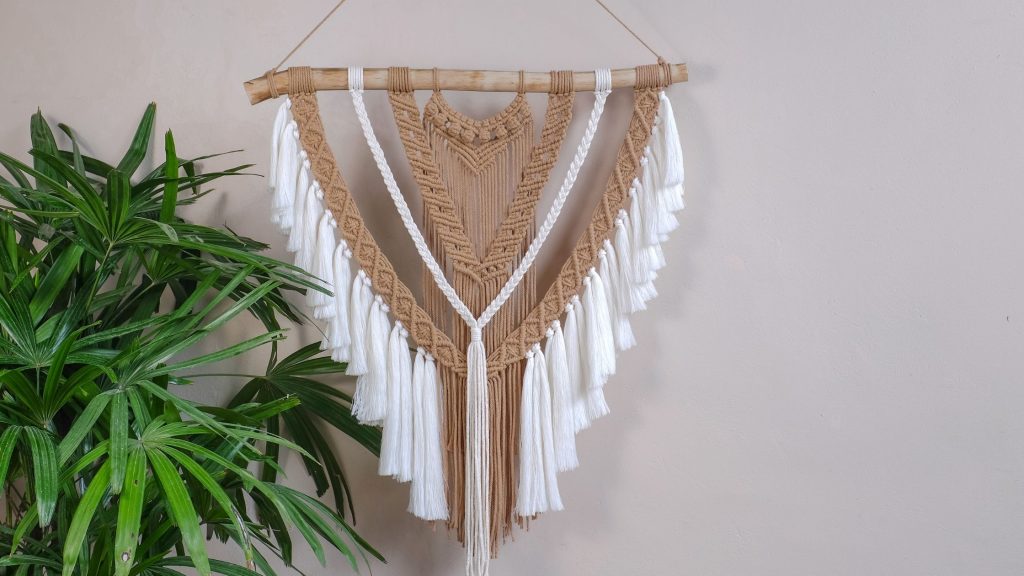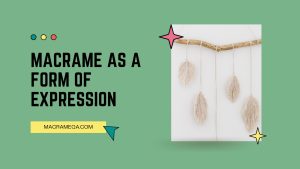Macrame, a weaving technique that involves knotting cords together to create intricate patterns, has a rich history in home decor. In the past, macrame played a significant role in adding a touch of elegance and Bohemian charm to homes. From wall hangings to plant hangers, macrame was used to adorn various spaces, adding texture and a handmade feel to interior design. This article explores the influence of macrame on home decor in the past and how its popularity has resurfaced in modern times. So, grab a cup of tea and get ready to unravel the story of macrame in home decor!
History of Macrame
Origins of Macrame
Macrame is an ancient art form that dates back thousands of years. Its exact origins are somewhat unclear, as it has been practiced in various cultures around the world. However, it is believed to have originated in the Middle East. The word “macrame” comes from the Arabic word “migramah,” which means “fringe.” This highlights the importance of decorative knots and fringes in macrame.
Spread of Macrame in Home Decor
Macrame began to gain popularity as a decorative technique in home decor during the Victorian era. It was embraced as a craft by women of the time, who would create intricate macrame pieces to adorn their homes. Macrame curtains, tablecloths, and doilies became common features in Victorian households, adding a touch of elegance to their interiors.
Macrame Techniques and Materials
Knotting Techniques
Macrame primarily involves the art of knotting. The two most commonly used knots in macrame are the square knot and the half hitch knot. These knots are used to create intricate patterns and designs. The square knot involves interweaving two sets of cords, while the half hitch knot is used to secure the cords in place. With various combinations of these knots, macrame artists can create a wide range of textures and patterns.
Material Selection
Traditionally, macrame was made using natural materials such as cotton, jute, linen, and hemp. These materials provided a rustic and earthy look to macrame pieces. However, modern macrame artists also experiment with synthetic materials such as nylon and polyester. The choice of material greatly influences the final look and feel of the macrame piece. Natural fibers offer a more organic and textured appearance, while synthetic fibers can provide a sleek and contemporary aesthetic.
Macrame in Various Cultures
Macrame in Ancient Egypt
Macrame has been practiced in various cultures throughout history, and one of the earliest recorded instances of macrame can be found in Ancient Egypt. The Egyptians used macrame techniques to create intricate jewelry and adornments. These macrame pieces were often made using fine threads and delicate knotting techniques. They were highly prized and were worn by both men and women as a symbol of status and power.
Macrame in Arab and Islamic Art
Macrame has deep roots in Arab and Islamic art. The art of decorative knotting, known as “Arabic interlacing,” was highly valued and widely practiced in these cultures. Macrame was used to create stunning textiles, wall hangings, and prayer mats. The intricate knot patterns were not only visually appealing but also carried symbolic meanings and cultural significance.
Macrame in China
Macrame has a rich history in China, where it is known as “Jie dai.” Chinese macrame is characterized by intricate knotting techniques and the use of vibrant colors. Macrame was used to create elaborate decorations for festivals and celebrations. It was also used to make functional items such as bags and slippers. Chinese macrame is still practiced today and is highly regarded for its craftsmanship and artistry.
Macrame in Native American Culture
Native American cultures also embraced macrame as a form of artistic expression. Macrame was used to create clothing, accessories, and decorative objects. It was often made using natural materials such as leather, feathers, and beads. Each tribe had its unique patterns and designs, which were passed down through generations. Macrame held deep spiritual significance and was integrated into various rituals and ceremonies.
Macrame in Victorian Era
During the Victorian era, macrame became particularly popular in Western cultures. Women of the time viewed macrame as a respectable and feminine art form. Macrame was used to create intricate lace-like pieces that adorned furniture, windows, and walls. It became a symbol of refinement and elegance in Victorian homes. Macrame was also used to create decorative accessories such as purses and fans.
Popularity in the 1970s
The Bohemian Trend
In the 1970s, macrame experienced a resurgence in popularity due to the rise of the bohemian trend. The bohemian lifestyle embraced free-spiritedness, individuality, and a return to nature. Macrame, with its handmade and natural aesthetic, is perfectly aligned with this movement. Many people started incorporating macrame pieces into their homes to create a bohemian-inspired atmosphere.
Macrame Plant Hangers
One of the most iconic uses of macrame in home decor during the 1970s was the creation of plant hangers. Macrame plant hangers allowed people to bring a touch of greenery into their homes while showcasing their macrame skills. These plant hangers were often made using thick ropes or cords and featured intricate knot patterns. They provided a unique and artistic way to display houseplants, adding a bohemian flair to any room.
Wall Hangings and Room Dividers
Another popular trend during the 1970s was the use of macrame wall hangings and room dividers. Macrame wall hangings were created in various sizes and designs, ranging from small intricate pieces to large statement pieces that covered entire walls. They added texture, visual interest, and a sense of warmth to living spaces. Macrame room dividers served both a functional and decorative purpose, allowing for privacy while creating a bohemian ambiance.
Functional Macrame Decor
Curtains and Blinds
Macrame was also used functionally in home decor, particularly in windows. Macrame curtains and blinds were made using delicate knotting techniques, creating intricate patterns that allowed light to seep through while maintaining privacy. These macrame window treatments added a unique touch to any room, combining functionality with artistic expression.
Bed Canopies
Bed canopies made from macrame were popular during the bohemian trend in the 1970s. They added a whimsical and romantic atmosphere to bedrooms. Macrame bed canopies were often adorned with flowing curtains and intricate knotwork, creating a dreamy sanctuary for relaxation.
Tablecloths and Doilies
In previous eras, macrame was frequently used in table settings. Macrame tablecloths and doilies provided an elegant and detailed touch to dining areas. They were meticulously crafted and often displayed intricate knot patterns. Macrame table linens were highly prized possessions and were often passed down through generations as cherished heirlooms.
Macrame as Art
Macrame Sculptures
Macrame is not limited to functional objects; it is also embraced as a form of art. Macrame sculptures exhibit intricate designs and larger-scale creations. Artists experiment with various materials, techniques, and patterns to create visually stunning macrame installations. These macrame sculptures can be found in art galleries, museums, and public spaces, showcasing the versatility and artistry of macrame as a medium.
Macrame Wall Art
Macrame wall art has also emerged as a popular form of artistic expression. Intricate macrame pieces are created to be hung on walls as focal points or decorative accents. Macrame wall art can come in various shapes, sizes, and designs, allowing for creativity and personalization. These pieces add texture and visual interest to any space, creating a unique statement piece.
Decline in Popularity
Changing Home Decor Trends
As home decor trends evolved, the popularity of macrame declined. The minimalist and contemporary styles that emerged in the late 20th century favored clean lines, neutral colors, and simplicity. Macrame, with its intricate knotting and bohemian aesthetic, did not align with these trends. As a result, macrame became less prevalent in mainstream home decor.
Association with Hippie Culture
Macrame’s association with the hippie culture of the 1970s also contributed to its decline in popularity. As the bohemian trend faded, so did the widespread use of macrame in home decor. Macrame started to be seen as a symbol of a particular era rather than a timeless art form. It became less commonly used, especially among younger generations who favored contemporary and modern styles.
Revival of Macrame
Modern Macrame Artists
In recent years, there has been a significant revival of macrame, with many modern artists embracing this ancient craft. These artists have breathed new life into macrame by exploring innovative techniques, materials, and designs. They push the boundaries of traditional macrame, incorporating new elements such as metal, glass, and unconventional knotting styles. Through their creations, modern macrame artists showcase the continued relevance and versatility of this art form.
Contemporary Macrame Home Decor
Macrame has also made a comeback in contemporary home decor. Designers and homeowners are incorporating macrame pieces into their interiors in new and exciting ways. Macrame wall hangings, plant hangers, and sculptures are being used to add texture, visual interest, and a touch of bohemian charm to modern spaces. Macrame is no longer restricted to hippie-inspired aesthetics but can be seamlessly integrated into a range of interior styles, from minimalist to eclectic.
Reimagining Macrame
Incorporating Macrame in Minimalist Interiors
Although macrame is often associated with bohemian and eclectic styles, it can also be successfully incorporated into minimalist interiors. Utilizing macrame in neutral colors and clean designs, it can add a soft and textural element to minimalist spaces. Macrame plant hangers, wall art, and table runners can create a subtle focal point and bring warmth to a clean and minimalistic room.
Macrame Fusion with Other Art Forms
Macrame is not limited to being a stand-alone art form. It can be combined with other art forms to create hybrid pieces. Macrame jewelry, for instance, incorporates the knotting techniques of macrame with metalwork or beadwork. Macrame can also be fused with other fiber arts such as weaving or crochet, resulting in unique and multidimensional creations. These combinations provide artists with endless possibilities for experimentation and innovation.
Conclusion
The history of Macrame is rich and varied, spanning cultures and centuries. From its mysterious origins to its many applications in home decor, macrame has evolved and adapted over time. From ancient Egypt to the bohemian trend of the 1970s, macrame has left its mark on various cultures and artistic movements. Despite experiencing a decline in popularity, macrame has experienced a revival in recent years, with modern artists reimagining this ancient craft. As macrame continues to evolve, it remains a versatile and timeless art form that adds warmth, texture, and creative expression to contemporary living spaces. Whether used as functional decor or showcased as standalone pieces, macrame continues to captivate and inspire.

















